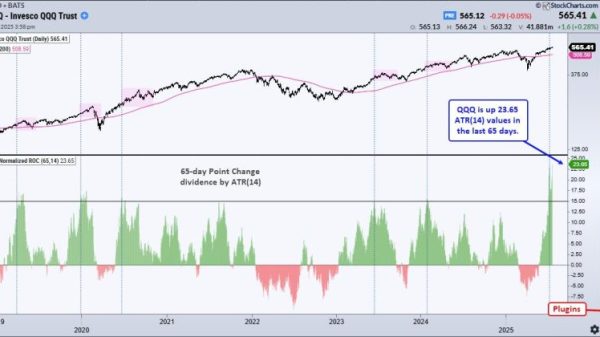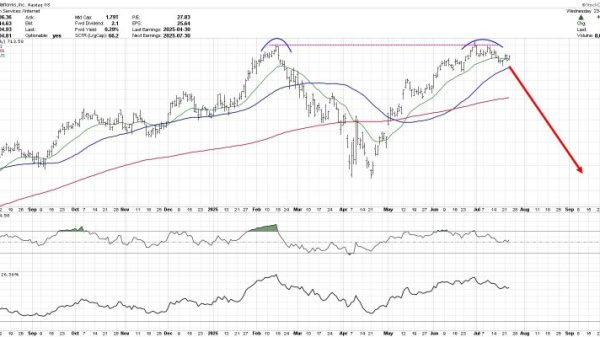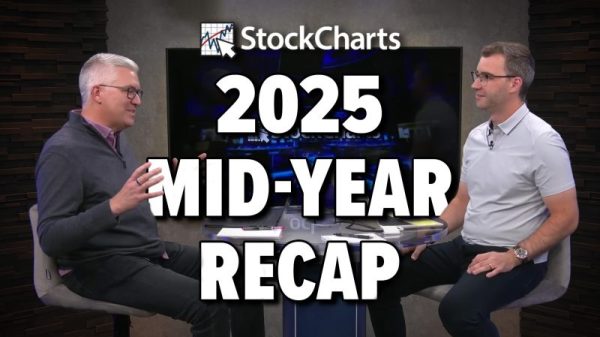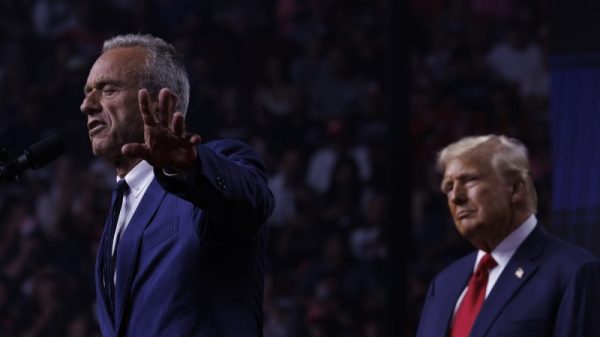“Unlike racist Joe Biden, I have spent my entire life working hand in hand with Black Americans to create jobs, build buildings, invest in our communities and expand opportunities and freedom for citizens of every race, religion, color. I built a lot of buildings. I want to tell you, a Black worker is a great worker. You’ve done an incredible job.”
— Former president Donald Trump, remarks during a speech to Black Conservative Federation gala, Columbia, S.C., Feb. 23
During his presidency, Trump often claimed he had done more for Black Americans than any other president — or, he sometimes might concede, since Abraham Lincoln. Historians scorned his claim. Many cited Lyndon B. Johnson, who signed into law the Civil Rights Act of 1964 and the Voting Rights Act of 1965. It was Johnson, the historians said, who after Lincoln was the president who made the most lasting impact on the lives of African Americans.
To make his case, Trump would cite achievements like a low Black unemployment rate, increased funding for historically Black colleges and universities (a congressional initiative, not an executive branch one) or passage of an opportunity zone program.
“Trump’s so-called accomplishments will not even be noticed by historians five years from now,” said H.W. Brands, historian at the University of Texas at Austin, in 2020.
Trump recited those claims yet again when he addressed a group of Black conservatives last week, even if the talking points have become woefully out of date.
“We achieved the lowest African American unemployment rate ever recorded,” Trump declared, apparently unaware that Black unemployment under Biden has fallen even further. According to the Bureau of Labor Statistics, the unemployment rate under Trump hit a low of 5.3 percent in August 2019, but had inched up to 6.1 percent before the pandemic struck in March 2020. Under Biden, the Black unemployment rate dipped to as low as 4.8 percent in April 2023; it was 5.3 percent in January.
But rather than fact-check Trump’s golden-oldie material — or his assertion, without evidence, that Biden is a “racist” — Trump’s reference to his career as a real estate builder who supported Black people prompted us to take a walk down memory lane. Trump’s troubled history with Black people was covered when he first ran for president in 2016, but it’s time for a refresher course now that he is seeking the presidency again.
You could begin the story in the 1950s, when Trump’s father, Fred, became the subject of a protest song, “Old Man Trump,” written by one of his tenants, folk singer Woody Guthrie, who objected to the all-White environs of his apartment complex. “I suppose that Old Man Trump knows just how much racial hate he stirred up in that bloodpot of human hearts when he drawed that color line here at his Beach Haven family project … Beach Haven is Trump’s Tower / Where no black folks come to roam,” the lyrics go.
Trump’s first appearance in the New York Times was under the headline “Major Landlord Accused of Antiblack Bias in City.” The front-page article detailed how the Justice Department had brought suit in federal court against Trump and his father, charging them with violating the 1968 Fair Housing Act (another LBJ bill that helped Black people) in the operation of 39 buildings through their Trump Management Corporation. The city Human Rights Commission had tested what would happen if Black and White people tried to rent the same Trump apartments — and discovered White people could easily get a rental but Black people were told nothing was available. A DOJ subpoena revealed that Black applications were marked with a “C,” for “colored.”
Donald Trump, then 27, took the lead in defending the case and told the Times that the charges “are absolutely ridiculous.” He added: “We never have discriminated and we never would.” The Trump Management Corporation turned around and sued the U.S. government right back.
Elyse Goldweber, a Justice Department lawyer who brought the suit, recalled in 2019 that Trump remarked to her during a coffee break: “You know, you don’t want to live with them either.”
Two years later, in 1975, Trump settled the suit without admitting wrongdoing. Under the settlement, the company was required to furnish the New York Urban League with a list of all apartment vacancies, every week, for two years and advertise in the Amsterdam News, a Black newspaper. Trump spun the defeat as saying he was pleased the settlement did not “compel the Trump organization to accept persons on welfare as tenants unless as qualified as any other tenant.”
In 1978, the Justice Department charged Trump’s organization with being in breach of the agreement by continuing to discriminate against Black people. That case dragged on until 1982, when the original consent decree expired.
When Trump became president, his administration scaled back enforcement of fair housing laws such as the 1968 act.
Two weeks after five Black and Latino teenagers were implicated in a brutal attack on a White woman jogging in New York’s Central Park on April 19, 1989, Trump took out full-page newspaper ads calling for the death penalty for “criminals of every age.” While the ad did not explicitly say the youths should be executed, the implication was clear.
All five initially confessed after long interrogations, but they later recanted their statements, saying they had been coerced by police. The suspects were convicted of violent offenses including assault, robbery, rape, sodomy and attempted murder — and they received sentences that ranged from five to 15 years in prison.
“Everybody, including Donald Trump, rushed to judge us, and therefore it became that much more difficult to be able to mount a really successful fight,” said Yusef Salaam, one of the accused. “And, of course, we lost.”
But in 2002, they were exonerated by DNA evidence. Trump then told the New York Daily News that their $41 million wrongful-conviction settlement was a “disgrace.” He added that “settling doesn’t mean innocence.”
Trump never apologized for his ad. “You have people on both sides of that,” he said after he became president. “They admitted their guilt.”
In November, Salaam was elected to the New York City Council. After his victory, he noted that Trump has been criminally charged in several venues. “I hope he gets treated the way we did not,” Salaam said. “They judged us guilty before we had a fair trial.”
Former Trump Plaza Hotel and Casino president John R. O’Donnell, in the 1991 book “Trumped,” alleged that Trump once said that “laziness is a trait in blacks.” He also claimed Trump said of his accountants: “Black guys counting my money! I hate it. The only kind of people I want counting my money are little short guys that wear yarmulkes every day.”
Trump has called O’Donnell a disgruntled employee, but he has not disputed the remarks. “The stuff O’Donnell wrote about me is probably true,” he told Playboy in an interview published in May 1997.
There’s also this Trump observation, from 1989: “A well-educated black has a tremendous advantage over a well-educated white in terms of the job market … If I were starting off today, I would love to be a well-educated black, because I believe they do have an actual advantage.”
(About our rating scale)
Send us facts to check by filling out this form
Sign up for The Fact Checker weekly newsletter
The Fact Checker is a verified signatory to the International Fact-Checking Network code of principles



























